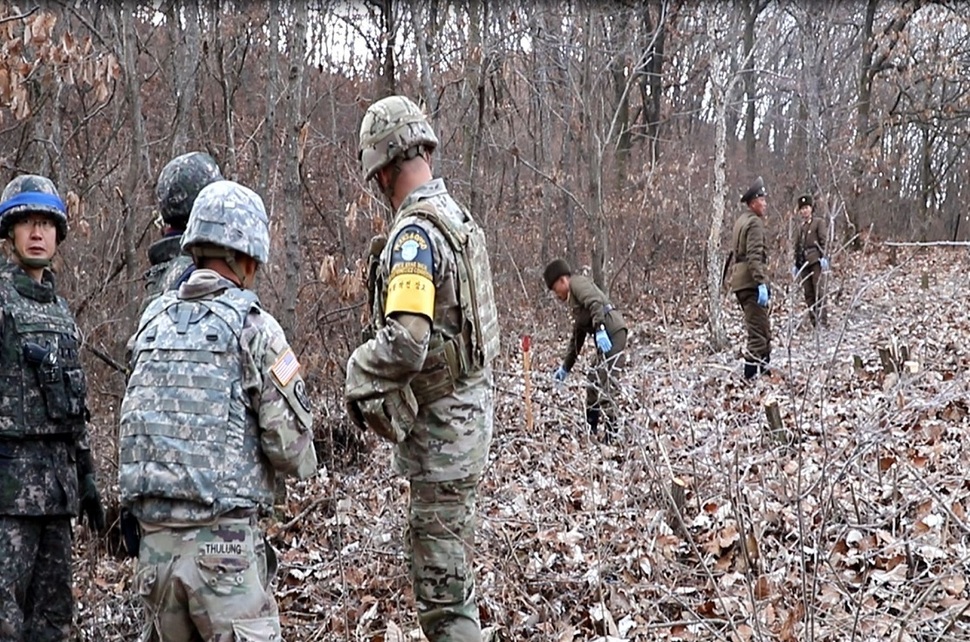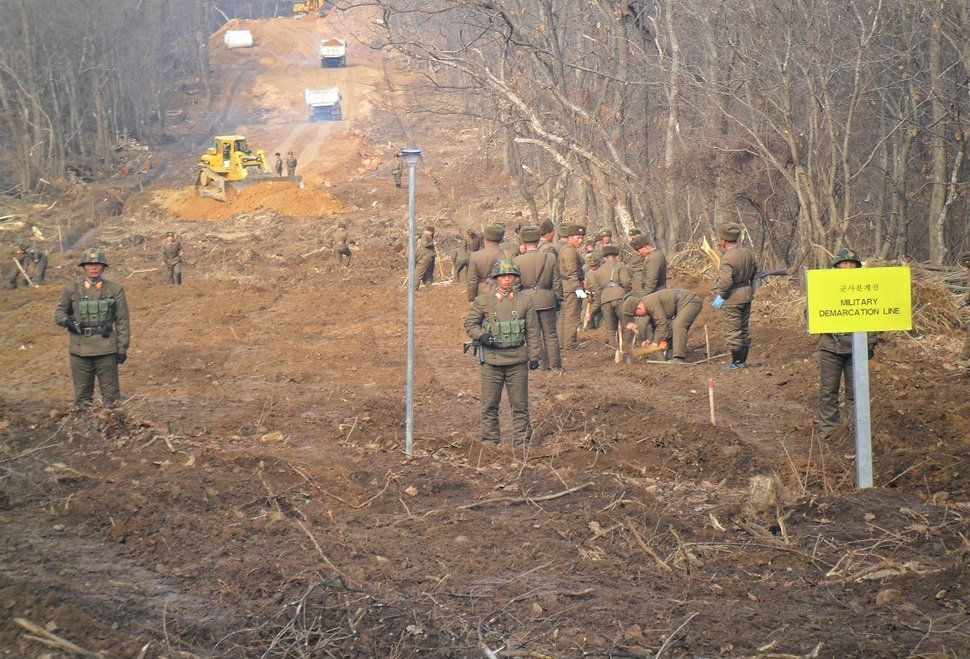Posted on : Nov.23,2018 15:45 KST
 |
|
South and North Korean military officials and soldiers greet each other at military roads connecting South and North Korea through the DMZ, which were successfully linked on Nov. 22 at Hwasalmeori (Arrowhead) Hill in Cheorwon, Gangwon Province. (provided by the Ministry of National Defense)
|
Road to serve in joint exhumation of Korea War MIA/POW remains
 |
|
The location of the inter-Korean military road linked through the DMZ IN Cheorwon County, Gangwon Province
|
Military roads connecting South and North Korea through the DMZ were linked on Nov. 22 at Hwasalmeori (Arrowhead) Hill in Cheorwon, Gangwon Province, previously the site of intense combat during the Korean War. The opening adds another route between the two sides at the Korean Peninsula’s center to join others running parallel to the West Sea (Seoul-Sinuiju) and East Sea railway lines. Cheorwon is passed by National Road 3, which once linked Namhae, South Gyeongsang Province, to Chosan in North Korea’s North Pyongan Province before transportation routes between South and North were severed 70 years ago.
The route opened on Nov. 22 is an unpaved tactical road for joint exhumation of the remains of Korean War MIA/POW, which is set to begin in earnest next April following an inter-Korean military agreement on Sept. 19. It marks the first time South and North Korean military authorities have linked up a military route through the DMZ since the armistice agreement was signed in 1953. In their military agreement, the two sides agreed to build a 12m-wide road in the exhumation region and connect it with the Military Demarcation Line (MDL) to allow the exhumation process to proceed more smoothly.
 |
|
South and North Korean troops are seen working on connecting inter-Korean roads via the DMZ in Cherwon County, Gangwon Province, earlier this month. (provided by the Ministry of National Defense)
|
The roads connected on the two sides start at the South and North Korean boundaries of the DMZ and meet at Arrowhead Hill. When the West Sea and East Sea railway line roads were linked in the past, the area of their linkage was designated an “inter-Korean management zone” – but the latest effort took place under the leadership of South and North Korean military authorities without those additional procedures. Because the effort is taking place in the DMZ, an Army engineering unit was sent in.
The linking of the roads is expected to result in more frequent communication between inter-Korean officials participating in mine removal and remains excavation.
“If remains of North Korean troops are found in the South, they have to be handed over to the North, while we need to go up and claim any South Korean troop remains found in the North,” a military official explained.
“South and North will now be coming and going across the Military Demarcation Line,” the official said.
The joint inter-Korean excavation of remains is set to take place between April and October of next year. Some observers are predicting the route used for the exhumation could lead to a revival of National Road 3, which once passed through the center of the peninsula.
 |
|
South Korean troops watch North korean soldiers' working on connecting inter-Korean roads via the DMZ in Cherwon County, Gangwon Province, earlier this month. (provided by the Ministry of National Defense)
|
 |
|
North Korean troops work on connecting inter-Korean roads via the DMZ in Cherwon County, Gangwon Province, earlier this month. (provided by the Ministry of National Defense)
|
By Yoo Kang-moon, senior staff writer
Please direct comments or questions to [english@hani.co.kr]













